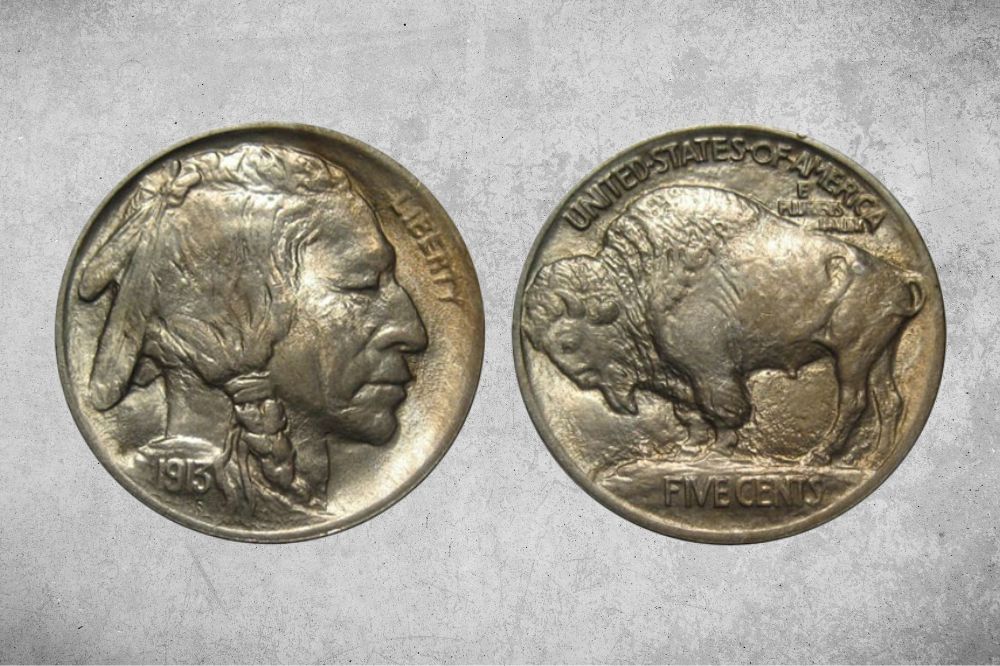Did you recently find a 1913 buffalo nickel? Or did you recently inherit some of them from your grandparents? If so, are you wondering how much these coins are worth?
Well, this is the main question we are going to answer today. In this post, we’re going to do a deep dive into the 1913 buffalo nickel value, its features, and its history.
1913 Buffalo Nickel Details
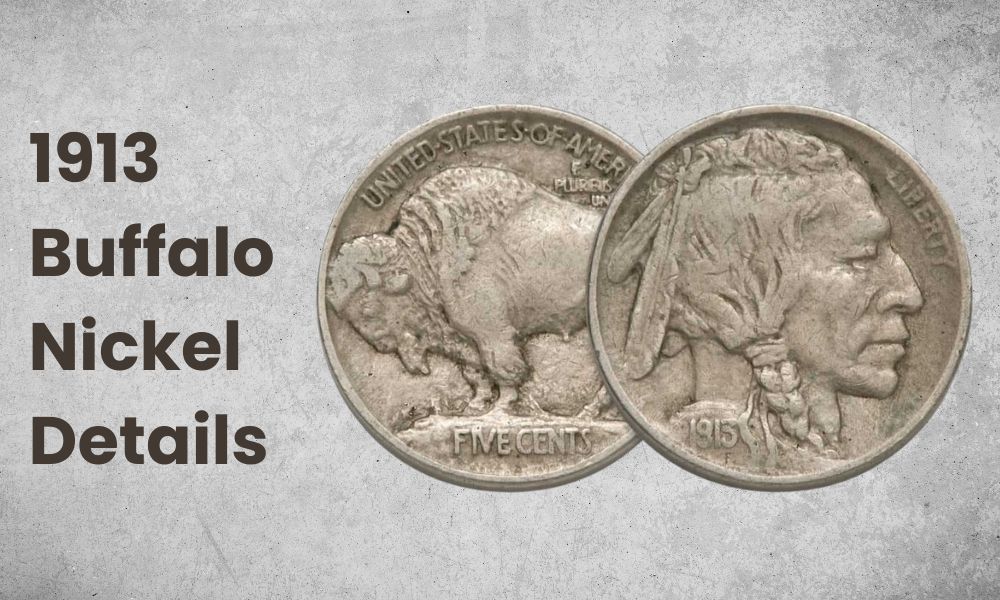
- Category: Buffalo Five Cents
- Total Mintage: 73,656,186
- Minting place: Philadelphia, Denver, San Francisco
- Diameter: 21.2mm
- Weight: 5g
- Edge: Plain
- Face value: $0.05 (5 cents)
- Composition: 75% copper and 25% nickel
- Engraver: James Earle Fraser
The Obverse Design of the 1913 Buffalo Nickel
On the obverse of the 1913 buffalo nickel, James Fraser engraved the image of a Native American man’s head looking toward the right. This image gave this coin two other names; the Indian head nickel and the Native American head nickel.
The Indian head on the coin had long hair that was done in a braid that was placed on the visible side. The hair also had two feathers in it.
Toward the edge of the coin, near the Indian man’s forehead and nose area, there’s also an inscription of the word, “LIBERTY.” James also engraved the year 1913 on the base of the Native American man’s neck, on top of the cloth that he covers the area with.
James came up with this design after having three Native American chiefs pose for him a few years before. The final image he created was a composite of their images. This decision made him one of the first people to make an authentic Native American engravement.
Most of those who made the engravings that had “Indian” images used Caucasian faces and features. They would just add an Indian headdress to the image to give it some cultural significance.
Apart from James Fraser, the only other person who had designed an authentic Native American image at this time was Bela Lyon Pratt. He designed the Indian head design that was placed on the 1908 quarter and half eagles.
It’s not surprising that James was also able to do this though. After all, he was an artist known for his impressive sculpture of a Native American. The sculpture was called “End of the Trail.”
The Reverse Design of the 1913 Buffalo Nickel
The 1913 buffalo nickel’s reverse side bears the image of an American bison. This animal gives the coin an American feel because it mostly lives in North America and Europe. While it resembles the African/Asian buffalo, it’s bigger and heavier.
One interesting thing about the bison on the 1913 buffalo nickel is that it stands on a piece of ground. Below this ground is a space that is filled with the words, “FIVE CENTS.”
Around the head and back of the bison, along the coin’s edge, the words “UNITED STATES OF AMERICA” are inscribed. Beneath the word “AMERICA”, James Fraser took things a step further and engraved the words “E PLURIBUS UNUM”.
This US traditional motto means “Out of many, one” in Latin.
Also Read: 15 Most Valuable Nickels Worth Money
1913 Buffalo Nickel Value Chart
| 1913 Buffalo Nickel Value Chart | ||||
| Type | Good | Fine | Extremely Fine | Uncirculated |
| 1913 Type I No Mint Mark Buffalo Nickel (P) | $7.37 | $10 | $16 | $25 |
| 1913 Type I “D” Buffalo Nickel | $11 | $16 | $24 | $42 |
| 1913 Type I “S” Buffalo Nickel | $29 | $38 | $51 | $83 |
| 1913 Type II No Mint Mark Buffalo Nickel (P) | $6.93 | $14 | $15 | $24 |
| 1913 Type II “D” Buffalo Nickel | $58 | $80 | $104 | $217 |
| 1913 Type II “S” Buffalo Nickel | $128 | $192 | $324 | $527 |
1913 Buffalo Nickel Value and Varieties Guide
One thing you should know about the 1913 buffalo nickel is that it was minted in two varieties; Type I and Type II. This happened because when the nickel was launched in March 1913 (Type I), many people didn’t like it.
Also, since the words “FIVE CENTS” were engraved on a raised mound, they experienced rapid wear. This led the chief Engraver of the time, Charles Barber, to suggest some modifications to the designer James Fraser.
These modifications were soon implemented, creating the Type II buffalo nickels. The first modification was that the ground that the bison was standing on was now a straight line instead of being hilly.
Beyond that, the mound below the line was dug into, making an exergue into which the “FIVE CENTS” inscription was made. Another modification was that the details on both sides of the coin were smoothed out.
Both type I and type II 1913 buffalo nickels were minted in Philadelphia, Denver, and San Francisco.
1913 Type I No Mint Mark Buffalo Nickel Value (P)
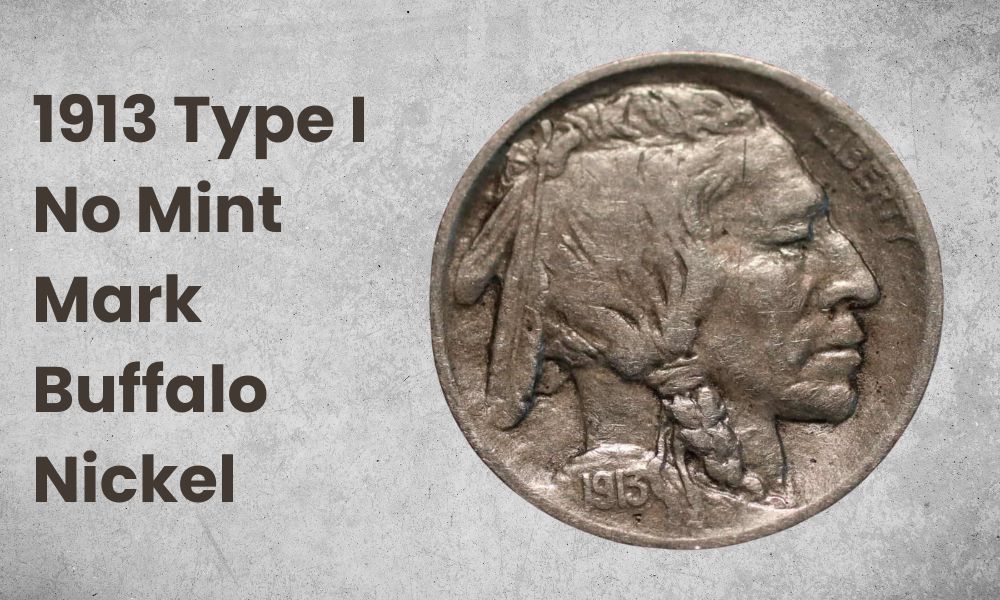
- Type: Buffalo Five Cents
- Mint: None
- Minting place: Philadelphia
- Year: 1913
- Edge: Plain
- Mintage: 30,992,000
- Designer: James Earle Fraser
- Face value: $0.05
- Current value: $5 to $37.50
- %Composition: 75% copper and 25% nickel
- Mass: 5 g
- Diameter: 21.2 mm
The Philadelphia mint produced 30,992,000 1913 type I buffalo nickels. These nickels didn’t have a mint mark. Since there were so many, they are still readily available right now, even in a mint state.
Average-grade coins of this variety can be bought for $5 to $37.50. However, some rare mint state 1913 type I buffalo nickels can go for as high as $27,500.
1913 Type II No Mint Mark Buffalo Nickel Value (P)
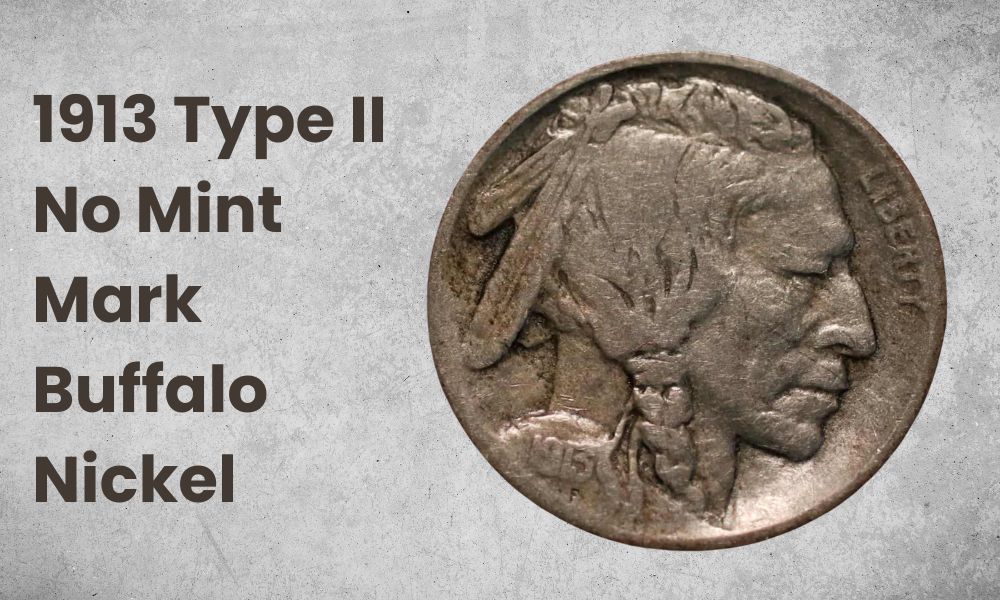
- Type: Buffalo Five Cents
- Mint: None
- Minting place: Philadelphia
- Year: 1913
- Edge: Plain
- Mintage: 29,857,186
- Designer: James Earle Fraser
- Face value: $0.05
- Current value: $5 to $37.50
- %Composition: 75% copper and 25% nickel
- Mass: 5 g
- Diameter: 21.2 mm
The Philadelphia mint produced 29,857,186 1913 type II buffalo nickels. These had no mint mark and are still readily available today at prices of $5 to $37.50. However, a rare find can go for as much as $8,750.
1913 Type I “S” Buffalo Nickel Value
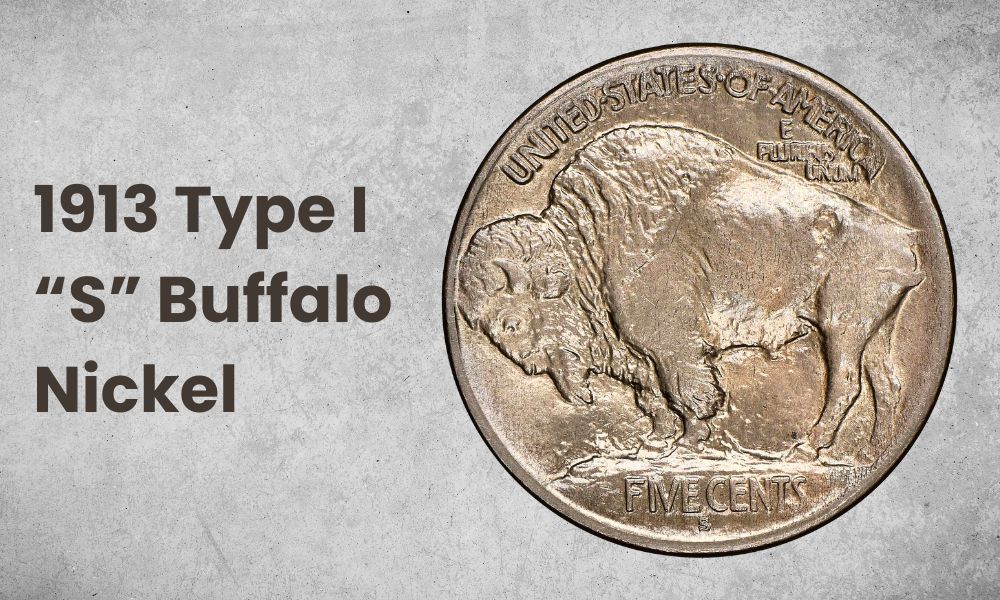
- Type: Buffalo Five Cents
- Mint: “S”
- Minting place: San Francisco
- Year: 1913
- Edge: Plain
- Mintage: 2,105,000
- Designer: James Earle Fraser
- Face value: $0.05
- Current value: $29 to $125
- %Composition: 75% copper and 25% nickel
- Mass: 5 g
- Diameter: 21.2 mm
The San Francisco mint produced 2,105,000 1913 type I buffalo nickels. All of these had an “S” mint mark under the “FIVE CENTS” inscription. This was placed between the “E” at the end of the first word and the “C” at the beginning of the second word.
These are scarce today and usually go for $29 to $125. In mint state, they can cost up to $15,000.
1913 Type II “S” Buffalo Nickel Value
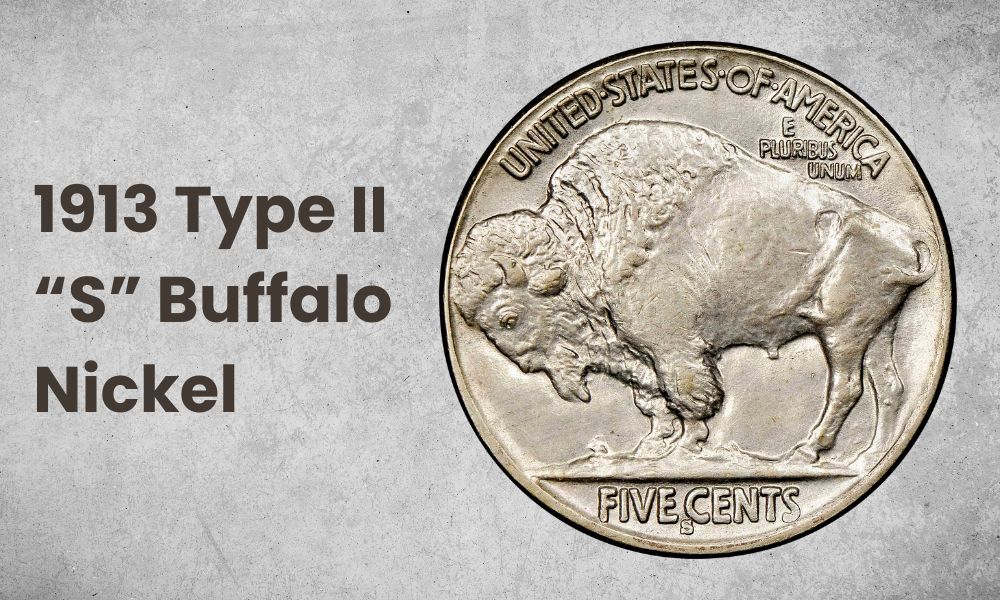
- Type: Buffalo Five Cents
- Mint: “S”
- Minting place: San Francisco
- Year: 1913
- Edge: Plain
- Mintage: 1,209,000
- Designer: James Earle Fraser
- Face value: $0.05
- Current value: $128 to $825
- %Composition: 75% copper and 25% nickel
- Mass: 5 g
- Diameter: 21.2 mm
The San Francisco mint produced 1,209,000 1913 type II buffalo nickels. They had the same “S” mint mark that their type I counterparts had. These coins are popular among collectors and get rarer the higher their grade.
In circulated conditions, they usually cost around $128 to $825. Uncirculated 1913 type II “S” buffalo nickels can cost up to $40,000.
1913 Type I “D” Buffalo Nickel Value
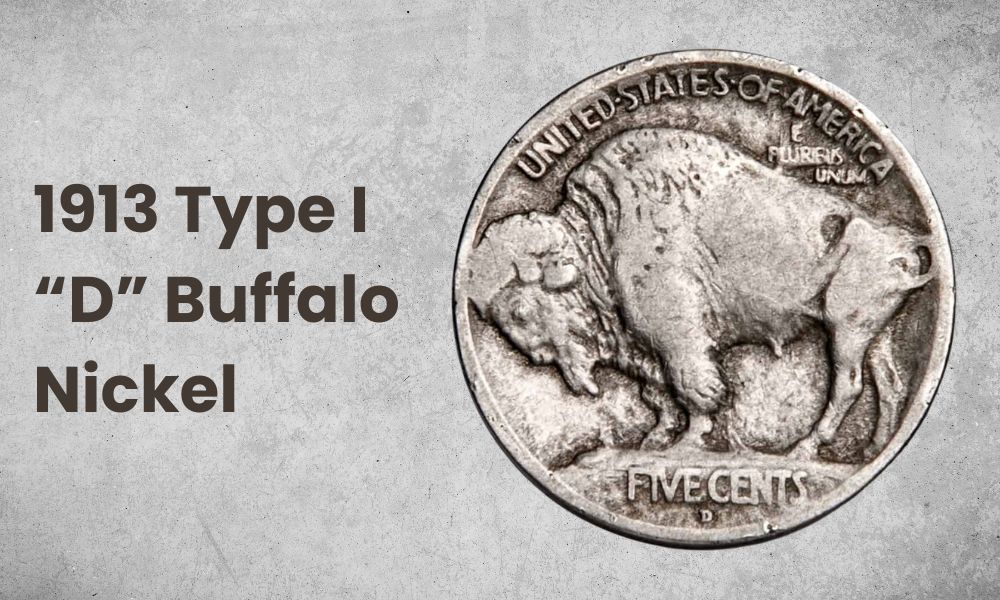
- Type: Buffalo Five Cents
- Mint: “D”
- Minting place: Denver
- Year: 1913
- Edge: Plain
- Mintage: 5,337,000
- Designer: James Earle Fraser
- Face value: $0.05
- Current value: $8 to $67
- %Composition: 75% copper and 25% nickel
- Mass: 5 g
- Diameter: 21.2 mm
The Denver mint made only 5,337,000 1913 type I buffalo nickels. This makes these coins scarce to this day. However, they are still in high demand because they were the first of their kind.
In average-grade condition, you can usually buy these coins for $8 to $67. However, a pristine rare find can cost you up to $30,000. Either way, these coins have a “D” mint mark under their “FIVE CENTS” inscription.
This mark was located under the “E” at the end of the first word and the “C” at the start of the second one.
1913 Type II “D” Buffalo Nickel Value
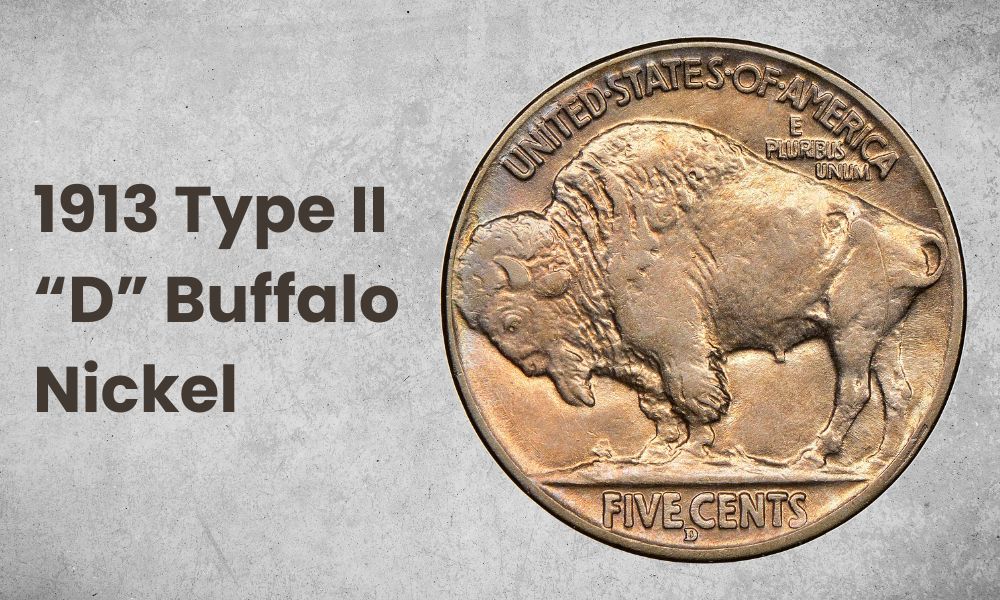
- Type: Buffalo Five Cents
- Mint: “D”
- Minting place: Denver
- Year: 1913
- Edge: Plain
- Mintage: 4,156,000
- Designer: James Earle Fraser
- Face value: $0.05
- Current value: $58 to $275
- %Composition: 75% copper and 25% nickel
- Mass: 5 g
- Diameter: 21.2 mm
The Denver mint produced 4,156,000 1913 type II buffalo nickels. These had the same “D” mark that their type I counterparts had. A circulated one will cost you around $58 to $275 today.
Since they are rare, the high-grade pristine ones can cost you up to $35,000.
Also Read: Top 110 Most Valuable Nickels Worth Money
1913 Buffalo Nickel History
The buffalo nickel was first minted in 1913 to replace the Liberty head nickel that was minted from 1883 to 1912. This was just one of the planned changes that were made to the appearance of US coins from 1907 to 1911.
So in 1908, the then-mint director, Frank Leach, had the responsibility of looking for a suitable designer for the 1913 buffalo penny. Since the chief engraver of the mint, Charles Barber had designed the Liberty head nickel, everyone expected him to be chosen.
Rumors had even started spreading that Charles was going to design a penny with the image of George Washington. But this never came to be as Frank Leach was soon replaced by Abram Andrew. And the latter chose James Fraser as the designer of the new nickel.
1913 Buffalo Nickel Grading
1913 buffalo nickel grading is usually done by checking the condition of the coin. This allows you to grade them into categories like good, fine, extremely fine, and uncirculated.
While you can try to do this at home, it’s more accurate when done by professional agencies like NGC and PCGS.
List of 1913 Buffalo Nickel Errors
1913 Buffalo Nickel 3 ½ legs
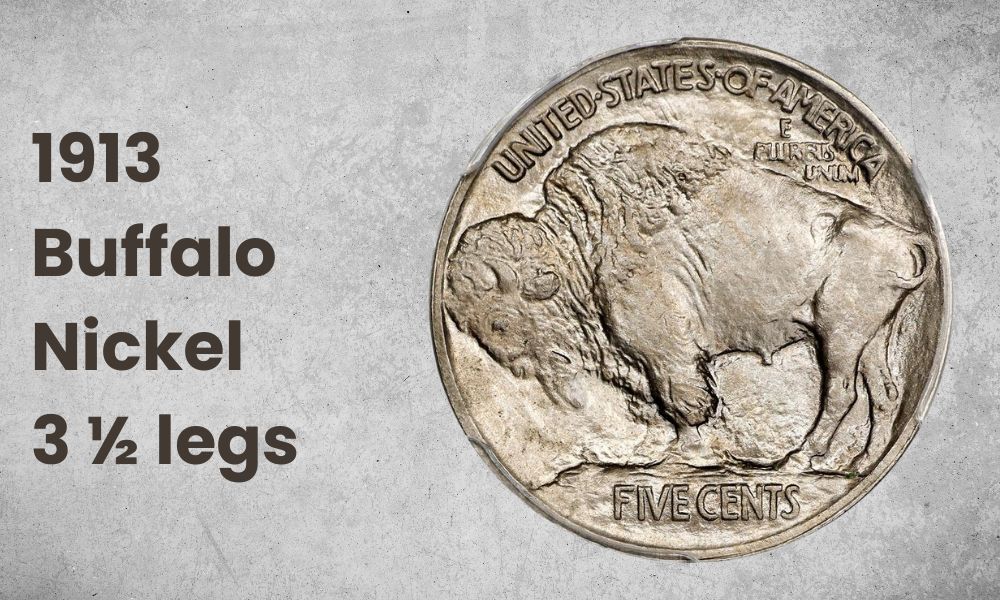
This is an error that results in a bison image that has 3 ½ legs instead of four; the half leg is one of the front ones. It indicates that the coin was polished excessively. It is a rare error to come across in all grades, making it valuable.
A PCGS MS64 with this error was sold at a 2003 auction for $19,550 while an NGC MS65 was sold in 2004 for $47,437.50. More recently, a PCGS MS66 sample sold for over $20,000.
1913 Buffalo Nickel 5c Struck on A 10c Planchet
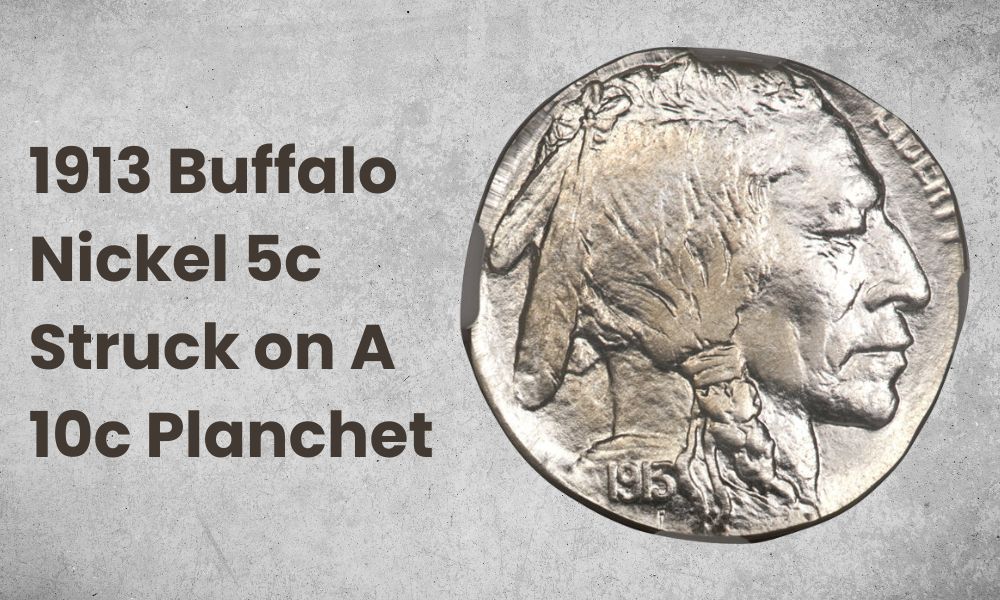
This error occurs when the buffalo nickel design is struck on the smaller 10-cent (dime) planchet. Since the design doesn’t fit, you end up with a coin that’s filled with the image of the Indian head, leaving no space for the “LIBERTY” and “1913” inscriptions.
Weighing in at only 2.5 grams, the coin is also lighter than the usual 1913 buffalo nickel. A coin with this error can sell for over $46,000.
1913 Buffalo Nickel FAQ
Is there a rare Buffalo nickel?
1926 S buffalo nickels are rare. They are even rarer than other buffalo nickels. This is because only 970,000 of them were ever produced; this is the lowest mintage in buffalo nickel history.
Why are Buffalo nickels so special?
Buffalo nickels are special because they were the first coins to bear the image of an animal that isn’t an eagle.
How do you know if your Buffalo Nickel is worth anything?
To know the value of a buffalo nickel, you should take it to a coin collector to check it out. However, they can only determine its worth if its date can be read.
If your coin has no date, it can only go for around six cents. And it will eventually just be sold to people who want to use it to make jewelry or shirt buttons. That’s why people go as far as treating their nickels with acid to reveal dates they can’t see properly.
